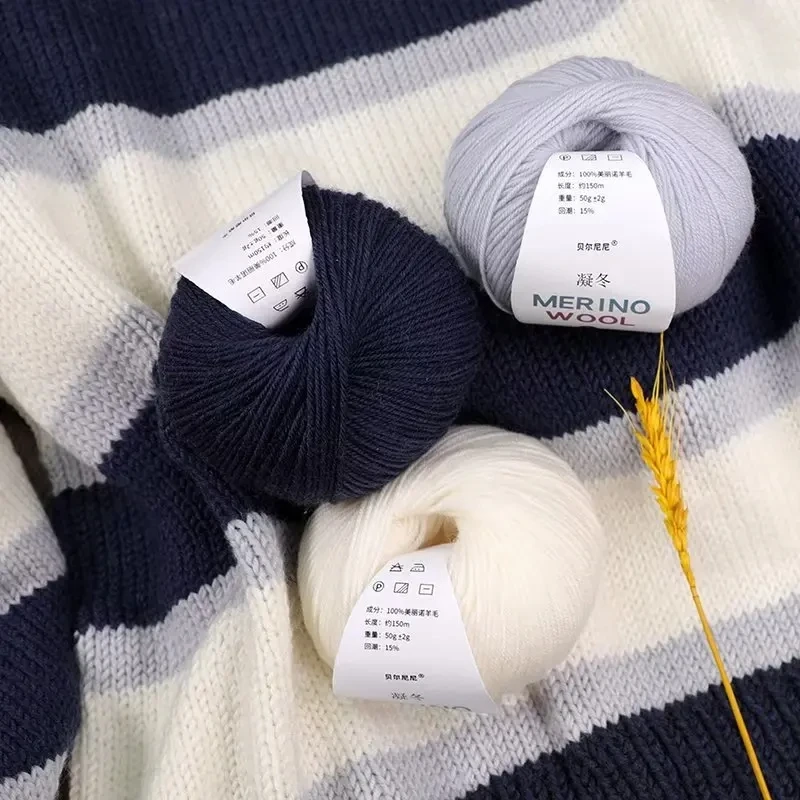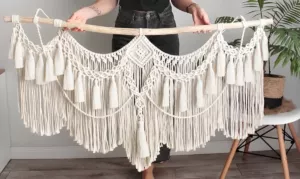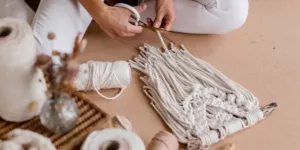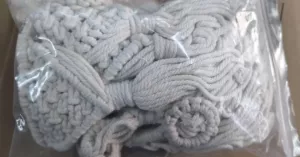Wool yarn is more than just a material used in textiles; it’s a fiber that tells a story of tradition, craftsmanship, and versatility. From the gentle shearing of sheep to spinning into threads that weave warmth and comfort, wool yarn is cherished by artisans and consumers alike. In this article, we will delve deep into the world of wool yarn, exploring its characteristics, the various types of wool, the production process, benefits, uses in fashion and crafts, and much more.
Introduction to Wool Yarn
Wool yarn is a type of natural fiber derived from the fleece of sheep and other animals. It has been used for centuries to create garments, textiles, and various household items. The significance of wool yarn can be traced back to ancient civilizations where it played a crucial role in daily life and trade. The evolution of wool yarn over the years showcases both advancements in techniques and a steadfast adherence to tradition.
Characteristics of Wool Yarn
Wool yarn is prized for its unique properties that make it exceptionally suited for a wide range of applications. Let’s explore what makes wool yarn stand out:
- Warmth: Wool yarn is known for its superior insulation properties. The fibers trap air, creating pockets that retain heat, making wool garments warm and cozy, perfect for cold climates.
- Durability: Wool’s natural elasticity means that it can stretch and return to its original shape without losing strength. This makes wool yarn highly durable, resistant to wear and tear.
- Elasticity: The crimped structure of wool fibers gives them natural elasticity, allowing knitted or woven wool yarn products to stretch without breaking.
- Moisture-Wicking: Wool yarn can absorb moisture up to 30% of its weight without feeling wet. It wicks moisture away from the skin, keeping the wearer dry and comfortable.
- Breathability: Despite its insulating properties, wool yarn is breathable. It allows air to circulate, preventing overheating and making it comfortable for various activities and seasons.
- Biodegradability: Unlike synthetic fibers, wool yarn is biodegradable. It breaks down naturally over time, reducing environmental impact.
Types of Wool Used in Yarn
Wool yarn can be made from different types of sheep wool and specialty animal fibers, each delivering unique textures and qualities.
- Merino Wool: Known for its softness and fine fibers, Merino wool is often used in high-quality clothing and next-to-skin garments.
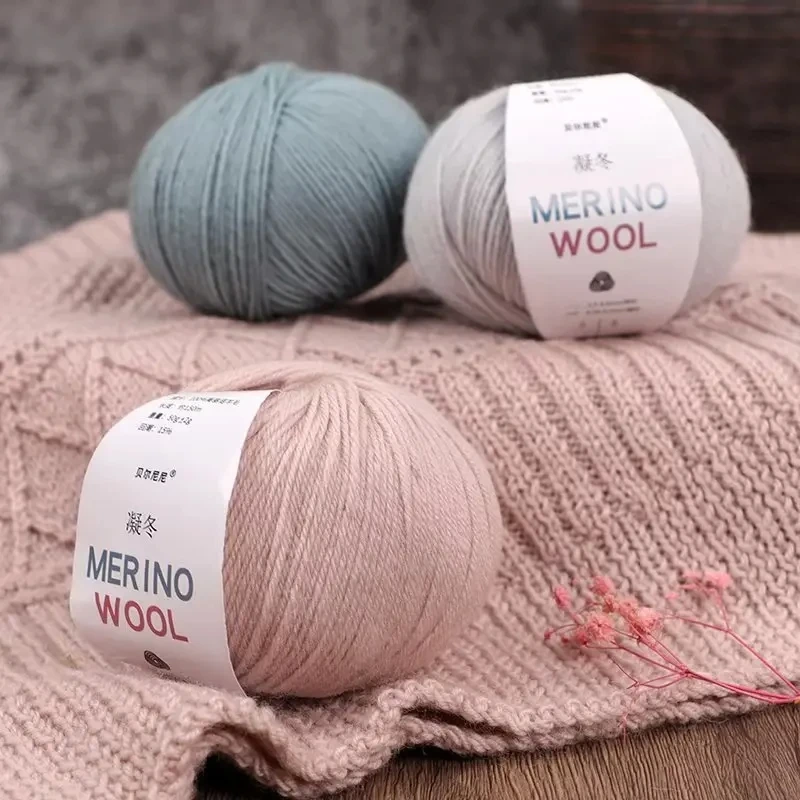
50g/roll Wool Yarn Soft Medium DIY Hand Knitted Clothes Hats Baby Yarn
Dive into the world of knitting with our premium Wool Yarn, specifically designed to bring out the artisan in you. Create stunning pieces that not only look beautiful but feel divine against the skin.
- Shetland Wool: This comes from Shetland sheep and is known for its strength and resilience, making it ideal for outerwear and hard-wearing items.
- Bluefaced Leicester: With its long, lustrous fibers, this wool is soft and has a beautiful sheen, suitable for both clothing and fine textiles.
- Alpaca: Not sheep wool, but often compared, alpaca wool yarn is luxurious and soft, warmer than sheep wool and hypoallergenic.
- Cashmere: Harvested from cashmere goats, this fiber is incredibly soft and lightweight, with excellent thermal properties.
- Mohair: From the Angora goat, mohair yarn is known for its durability and sheen, often blended with other fibers for added texture and luxury.
Production Process of Wool Yarn
Turning raw wool into yarn is a detailed and meticulous process. Here’s a closer look at how wool yarn is made:
- Shearing: The process begins with shearing, where the fleece is carefully removed from the animal. Skilled shearers ensure that the sheep are handled gently and the fleece is sheared in one piece.
- Cleaning (Scouring): The raw fleece is then cleaned to remove grease, dirt, and impurities. This involves washing in multiple baths with biodegradable detergents.
- Carding: Carding involves brushing the cleaned fibers to align them and remove tangles. This prepares the wool for spinning by creating a continuous web of fibers.
- Spinning: The carded wool is spun into yarn using spinning wheels or industrial machines. This involves drawing out the fibers and twisting them to form a continuous thread. Different spinning techniques can produce various textures and strengths of yarn.
- Dyeing: The spun yarn can be dyed to achieve the desired color. Natural dyes and synthetic dyes both offer a wide range of colors and effects.
- Finishing: The final step involves washing and setting the yarn to ensure it’s clean and retains its structure. The yarn is then wound into skeins or balls for sale and use.
Benefits of Using Wool Yarn
Choosing wool yarn over other fibers offers numerous benefits:
- Insulation and Temperature Regulation: Wool yarn provides natural insulation, keeping the wearer warm in winter and cool in summer by regulating body temperature.
- Moisture-Wicking and Breathability: Wool’s ability to absorb and wick moisture keeps the skin dry and comfortable, making it ideal for sportswear and activewear.
- Biodegradability and Sustainability: Wool yarn is a renewable resource that decomposes naturally, reducing environmental impact and promoting sustainable craftsmanship.
- Durability and Longevity: Wool yarn’s natural elasticity and strength ensure that woolen garments and textiles last longer, providing lasting value.
- Texture and Comfort: The softness and elasticity of wool yarn make it comfortable to wear and handle, ideal for creating cozy garments and accessories.
Wool Yarn in Fashion and Crafts
Wool yarn plays a significant role in fashion and various crafts. From high-end designer collections to handmade accessories, wool yarn is a favorite due to its versatility.
- Knitting and Crocheting: Wool yarn is perfect for creating a wide variety of knitted and crocheted items, including sweaters, scarves, hats, and blankets.
- Weaving: Wool yarn is used in weaving to produce fabrics for clothing, upholstery, and rugs. Its natural strength and texture make it ideal for these applications.
- Fashion Trends: Wool yarn has seen a resurgence in fashion, with designers embracing its natural properties and sustainability. Wool garments are featured in winter collections and eco-friendly fashion lines.
Care and Maintenance of Wool Yarn
Proper care of wool yarn ensures that it remains in good condition for years to come.
- Washing: Wool yarn items should generally be hand-washed in cool water with a mild detergent. Avoid wringing or twisting the fabric to prevent damage.
- Drying: After washing, wool items should be laid flat to dry to maintain their shape and prevent stretching.
- Storage: Store wool yarn in a cool, dry place away from direct sunlight. Use cedar blocks or lavender sachets to keep moths at bay.
- Repair and Rejuvenation: Small repairs can prolong the life of wool items. Pilling can be removed with a fabric shaver, and minor tears can be mended with careful stitching.
Sustainable and Ethical Practices
As consumers become more conscious of environmental and ethical issues, sustainable wool yarn production has become increasingly important.
- Ethical Wool Production: Look for certifications such as the Responsible Wool Standard, which ensures animal welfare, sustainable land management, and fair labor practices.
- Environmental Impact: Wool yarn is a renewable resource, and its production has a lower environmental impact compared to synthetic fibers. Supporting brands and artisans who use eco-friendly practices helps promote sustainability.
- Supporting Artisans: Buying wool yarn from local producers or fair-trade organizations supports artisans and helps preserve traditional skills and crafts.
Common Questions About Wool Yarn
Even with its many benefits, consumers often have questions about wool yarn:
- Is wool yarn itchy?
- Modern wool yarn, especially from breeds like Merino, is much softer and less likely to cause itching compared to older, coarser wool.
- Can wool yarn be machine washed?
- Some wool yarns are labeled as machine washable or “superwash,” which means they have been treated to prevent felting. Always check the care label.
- How does wool yarn compare to synthetic yarns?
- Wool yarn is natural, biodegradable, and breathable, whereas synthetic yarns are made from petroleum-based materials and may not offer the same level of warmth and comfort.
- What makes Merino wool yarn special?
- Merino wool yarn is exceptionally soft, fine, and comfortable against the skin. It’s also highly breathable and moisture-wicking.
- Are there hypoallergenic wool yarns?
- Yes, fibers like alpaca and certain treated wool yarns are hypoallergenic and suitable for those with sensitivities.
Conclusion
Wool yarn is a remarkable material with a rich history and a multitude of benefits. From its natural properties like warmth, breathability, and durability to its environmental sustainability, wool yarn stands out as a preferred choice for many artisans and consumers. By understanding what wool yarn is, how it’s made, and how to care for it, we can appreciate the artistry and effort that goes into producing this wonderful fiber. Whether you’re knitting a cozy sweater, crocheting a delicate shawl, or simply wearing a wool garment, you’re part of a tradition that values quality, sustainability, and the enduring appeal of natural fibers.

